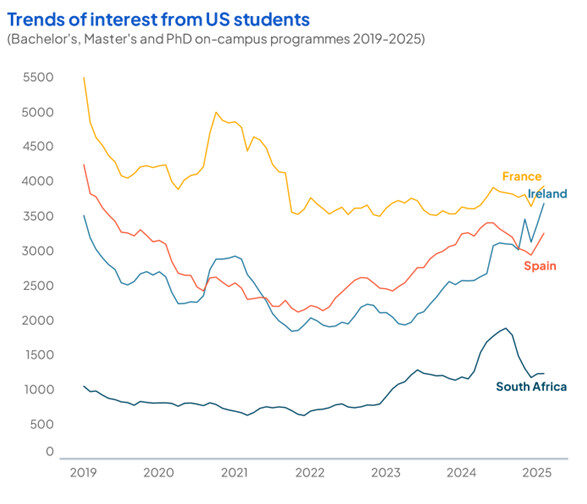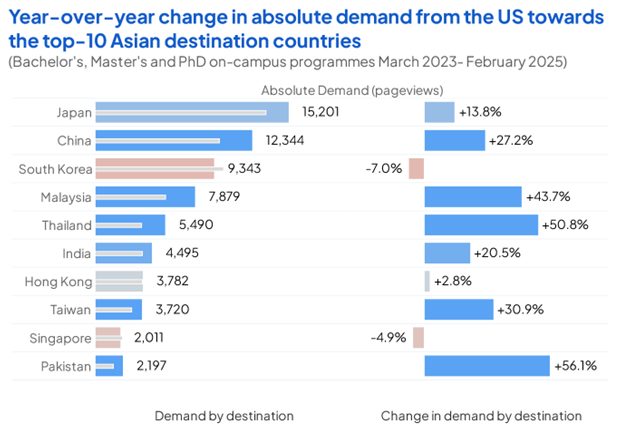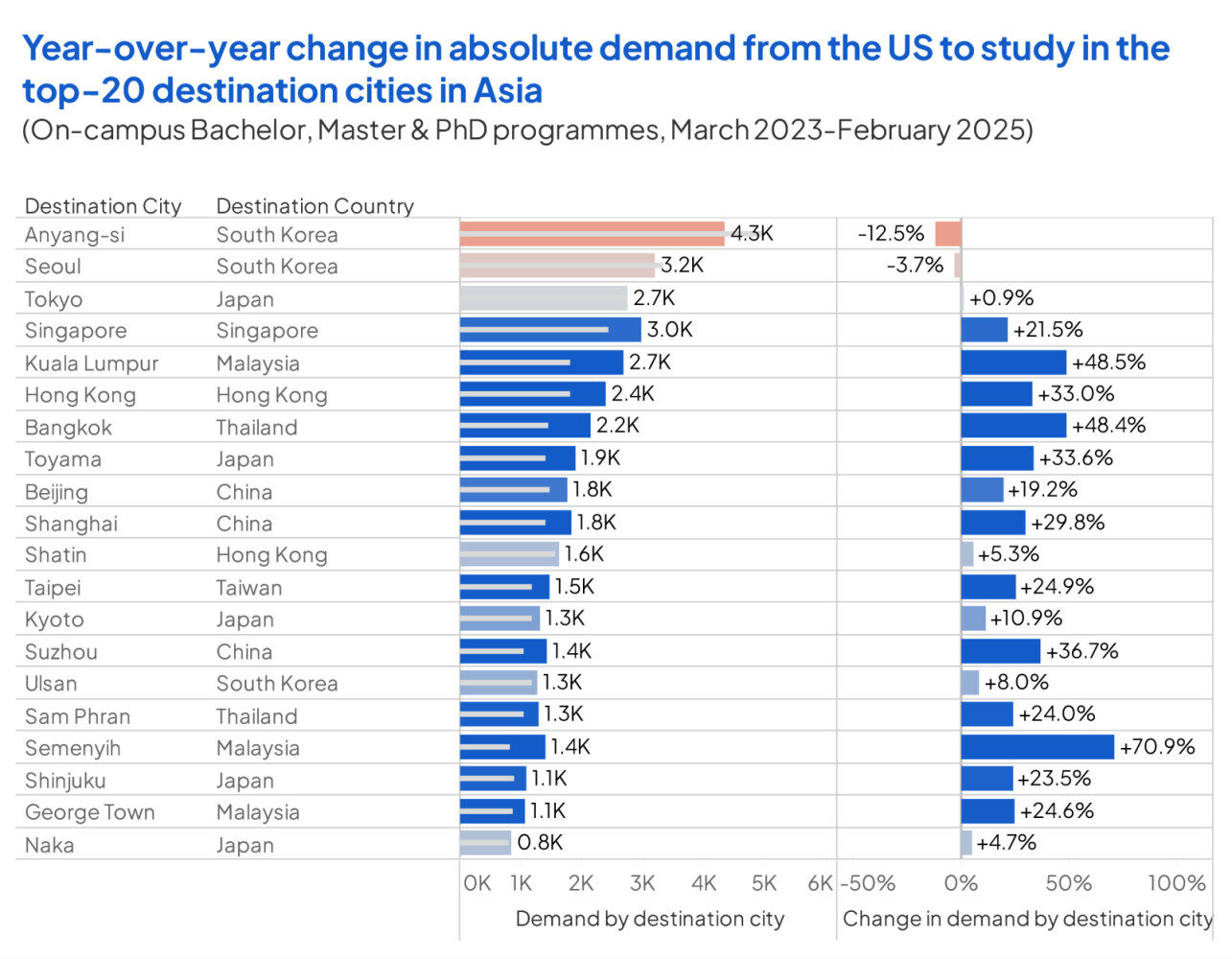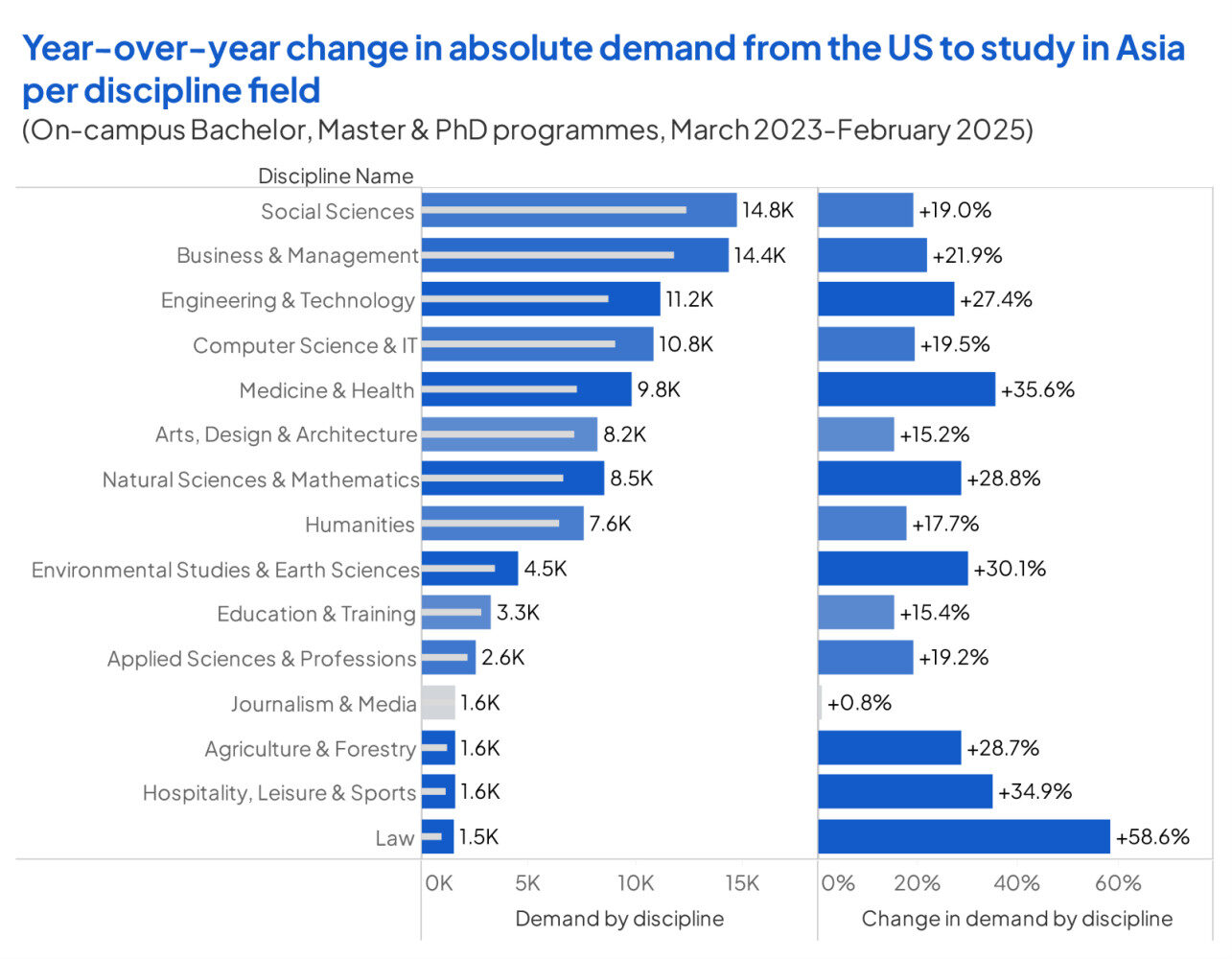Regions Attracting US students


US policy changes are affecting both inbound and outbound student flows. Studyportals data indicates that more American students are considering studying abroad.
This article looks at the students’ online behaviour on Studyportals to see which destinations American student are interested in. From the data, it is apparent that some regions are benefiting from the recent changes in the US, leaving open the possibility to attract those students towards their institutions.
Beyond the Big Four
Beyond the Big Four study destinations (the US, the UK, Australia, and Canada), interest from American students in countries like France, Ireland, Spain, and South Africa has steadily increased. In contrast, the traditional Big Four have not experienced the same level of growth in student demand. Among these emerging destinations, Ireland stands out as a particularly strong alternative for US students, showing the highest growth in interest. This shift suggests that students are increasingly open to looking beyond traditional study hubs in search of diverse academic experiences, new cultural environments, and potentially more affordable education options.

US students show a boost of interest towards Asia
Prospective students often favour traditional study destinations like Australia, Canada, the UK, and the US for their global reputation, while Europe remains a key hub for its academic quality, cultural diversity, and high living standards. However, Studyportals data highlights Asia’s growing appeal as a competitive study destination due to its high-ranking universities, affordability, and lower living costs. The region is not only home to world-class institutions but also benefits from a strong demand for education driven by a rising middle class. With more students choosing to stay within Asia, universities are improving facilities and attracting global interest, further fuelled by the region’s cultural allure. Additionally, Asia’s economic rise and government initiatives to retain foreign talent, particularly in countries like Japan and South Korea, make it an increasingly attractive choice for international students seeking post-study job opportunities.
Consequently, it appears that students from the US show a growing interest in studying in Asian countries, with the highest interest attributing to Master’s and Bachelor’s programmes. While this interest may come as a surprise to many, it is something that cannot be dismissed.

The Asian countries experiencing the highest increase in interest from the US students are Japan, China, Malaysia, and Thailand. These countries not only show strong demand but have also seen significant growth over the past year. As they expand their offerings of English-taught programmes and enhance their global reputation, US students are taking notice. Additionally, a possible factor influencing Studyportals data could be Asian students currently in the US opting to return home as conditions shift.

When we dive deep into the Asian cities that are capturing that growth, it is apparent that various cities such as Singapore, Bangkok, Beijing, and Kuala Lumpur are among the top cities gaining student attention. Other cities such as Seoul and Tokyo show little to no change in demand in the past years from the US.

While Social Sciences and Business & Management programmes remain the most popular among American students offered by Asian universities, the past year has seen significant growth across nearly all disciplines, except Journalism & Media. Such broad expansion is rare for study destinations, making it a remarkable trend. This further highlights the growing interest among US students in pursuing a diverse range of degrees in Asia.

Asia’s rapid economic growth offers abundant career opportunities, particularly in sectors like technology, finance, and manufacturing. This economic expansion is attractive to international students seeking to align their education with emerging markets. Additionally, cultural immersion in Asia provides unique experiences that enhance personal growth and global awareness.
These developments suggest that the landscape of higher education is undergoing significant changes, with Asia emerging as a more attractive destination for international students, including those from the United States. As geopolitical dynamics evolve, educational institutions worldwide must adapt to shifting student preferences and global mobility trends.


